Black Stone in Istanbul «
Feb 2010
We wanted to have a rest from meteorites. Over the last few years our holiday breaks were always connected with them in some way. For once, we just wanted to visit Moscow but at the end of our trip we ended up spending hours and hours in Fersman's museum. The same happened on our visit to London where we ended up at the Museum of Natural History (NHM) in the department of meteorites. Even in Budapest we found a small collection of 'black stones' and during our trip to Lanzarote (Canary Islands) we planned to learn some petrography and to find some olivine (a mineral often present in meteorites). We were always delighted only with the desert. We did not know that everything would change.
Return to the past
Istanbul enchanted us years ago, when it was part of our students trips. Would we find those pictures from the past? Are they still as fascinating as they used to be? Will they be blurred by the rain forecasted by BBC Weather Channel for the whole period of our stay? The City did not disappoint us. The Hagia Sophia Basilica was as monumental as before, Topkapi Sultan's Palace was no less luxurious and the Spice Bazaar, was as always full of scents, spices and herbs and the masses of people, selling, yelling, calling and trying to get your attention all the time. This was the first time we took a cruise along the Bosphorus. In the distance we could clearly see numerous mosques and dozens of high minarets.
Inconspicuous little mosque
Up the hill from our hotel was a rather small mosque. Two circular gates led us into the courtyard, where the mosque stood. In the courtyard we found a row of Muslim gravestones evidently touched with the 'tooth of the time' we were there on the first day, only for a moment, lured both by the mystery and quietness of this place, but also curious about this tiny mosque in contrast to the nobility of hundreds of Istanbul's spectacular places. We dashed off farther and it didn't come to our mind, that we would come back here again but already with this demonic 'meteoritic' flash in the eye.
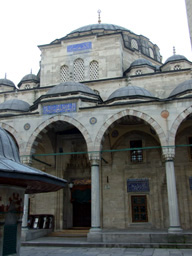
Sokollu Mehmet Pasha Mosque, (Sokullu ªehit Mehmet Paºa Camii)
Later we rested a couple of hours on the hotel bed and planned the route for the next day. While searching through the guide we found information about the mosque in the neighbourhood that we were found interesting. We were surprised that three whole paragraphs had been devoted to it. Sokollu Mehmet Pasha Mosque turned out to be more ancient than we thought. For is age of 439 years it looked outstanding. It was even 37 years older than the most famous Blue Mosque. Reading on we were shocked to find that the small mosque, one hundred metres from our hotel contained four fragments of the 'magic stone' from Kaaba. If it had not been the middle of the night, we would have run there in our pyjamas. For years we have been dreaming about seeing and touching this unusual stone. There was even a period when we planned a trip to Mecca to see in but stories told by experienced travellers, in which they claimed that non-believers never see the Kaaba, cooled our enthusiasm. Even advice that we should pretend to be Muslims did not alleviate our fears. And now, in Istanbul, somewhere beneath the little dome bathed in moonlight, the Black Stone – Hajar was in reach of our hands.
Touch only for tall ones
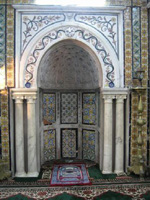
Mirhab (arabic محراب) – a name of the place which shows the direction to Mecca
In the morning we entered the gate of the mosque and looked towards the entry. There was a heavy green veil protecting the praying people from the cool winter wind which was half rolled-up and the door's wooden leaf was open. When we were taking off our shoes at the entrance, an old man, the caretaker of the mosque, appeared. He did not want us standing on the cold marble floor only in socks and invited us inside where the floor was covered with carpets.
He did not hesitate and he showed us to the four sacred stones. All of them were set in walls. Speechless, we ran from one place to the next. One of the stones was just over the entrance, set in a wavy golden outline; the second one in mirhab (the name of the place which shows the direction to Mecca) this also had a golden outline; the third in minbar's platform (a place where Imam says his speeches) and the last one was on the arch, just near the stairs to minbar. The first three 'specimens' were set very high and were lost in the darkness of the poorly lit temple. The fourth one was set lower. We were informed that taking pictures was strictly banned, but we could buy a prepared set of photos. Unfortunately, the quality of pictures was barely acceptable and the theme was not what we were interested in because it gave details of architecture and pieces of blue-ornamented tiles.
We craned our necks up to the dome, in order to feast our eyes as much as we could, but unfortunately we could barely see anything. Woreczko stood on his toes on the second step of minbar, straightened up and tried to extend his hand. He was lucky, that Allah made him a tall man. Happy like a child he was touching the rectangular stone. I did not have enough courage to have an encounter with Islam's most sacred item. Before the old man banned us to do so, I grabbed a plastic stool and I was about two meters from the stone (there were stairs that prevented me being closer). I was trying to look for chondrules, inclusions – something could confirm its space origin. Unfortunately, because of its religious significance, the stone was polished shiny by thousands of fingers. Weak light reflected in its surface like a mirror but we did recognize a greenish colour of the specimen.
After our daring actions, we left the mosque. We left some money in the demanding hand and separately in the money box for the renovation of the building. Everything seemed to happen in slow-motion. We had to rest for a moment to cool down in order to reach a conclusion that none of us knew or could believe what we had just seen. Could this little mosque which was practically deserted, have such a treasure? A spectacular question was finally put forward: Was that shining stone really a meteorite? We set a plan of action for that evening to take pictures in the mosque. There was no "plan B".
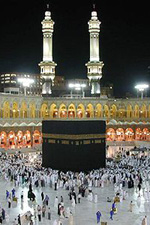
The pilgrims walking around the Kaaba (Wiki)
HAJAR, Black Stone – SANCTITY of ISLAM
Kaaba (from the Arabic al-Ka'bah (الكعبة) – cube) is a monumental stone temple in Mecca in the form of a cubic structure with a height of 15 meters, 12 meters long and 10 meters wide. Its corners are turned to the four corners of the world. [Wiki Kaaba]
Black Stone. In the corner of the eastern side at a height of 1.5 meters is the sacred stone walled Hajar (Black Stone, from the Arabic al-Hajar al-Aswad (الحجر الأسود), which means 'black stone'). In the 683 years during the riots caused by the warring Arab tribes it was damaged and collapsed at least three parts (different sources give different), so put it in a silver rim. Replica ring made of gold can be seen in the Topkapi Palace in Istanbul. The stone is black, and gleaming reddish tinge. Apparently the original was white, but under the influence of absorption of sins and forgiveness of wine pilgrims who make a tribute to him, he changed the color to black. [Wiki Black Stone]
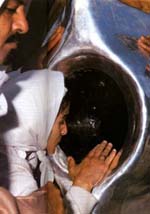
Black Stone (Hajar) (Wiki)
It is believed that Hajar is a meteorite or tektite, some theories say that a piece of lava. There is no reliable information about it. Also it is very difficult to find photographs of the Black Stone – I managed to find some good quality [pic1 | pic2 | pic3 | pic4] – but it is difficult to decide on the basis of his nature!
According to tradition, Adam first built the Kaaba after the expulsion from paradise, but did not survive the flood. So Abraham built it with his son Ishmael, and they put in the corner of Black Stone brought by the Archangel Gabriel – one of the highest-ranking angels in both the Christian tradition, Judaic and Islamic. But in the last Gabriel is the messenger of Allah and Mohammed tours, he dictated the last prophet of the Koran. Even Ptolemy wrote that in the second century BC the Kaaba was a small shrine. But that Muhammad had made it a place of worship of Allah ordered the destruction of the other 360 idols of tribal, but a black stone. Built around the Kaaba mosque. Black Stone is the greatest sanctity of Islam and the purpose of pilgrimage for millions of followers.
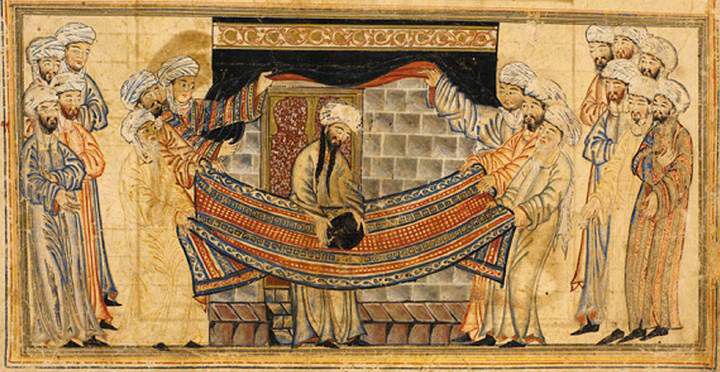
Miniature showing the re-dedication of the Black Stone the Prophet Muhammad. With the "Universal History" by Rashid-al-Din Hamadani. Mohammed Image Archive
Legend has it that at the birth of Muhammad, the angels
surrounded the Kaaba. Grandfather of the future prophet, Abd al-Muttalib was to discover that a grandson
footprint is the same as that which Abraham left the Black Stone in Kaabi!
Reproduced from the book: Anne-Marie Delcambre Mahomet. G³os Allaha (Voice of Allah)
Second approach
The following morning we prepared money. We deducted three fixed amounts because none of us knew how much the kindness of the guard would cost. We arrived at the mosque gates. We were surprised that the heavy door to the entrance was closed. We were hanging around for a while and all of a sudden an unknown elderly man appeared, clanging a set of keys. We hoped he would turn out to be kinder than the guard from yesterday. We walked in the mosque and asked whether it was possible to take photographs. He proposed that we buy 'ready-made photographs' but we explained that we wanted to take our own pictures.
The first package of money solved the problem. The elderly gentleman spread his hands and looked into the sky as if searching for approval. He smiled and nodded his head at the approval. He also gave us a few photographs chosen by him and he quietly stood aside. At first, Woreczko struggled with the darkness and the lack of a good standpoint for the camera, and then he started taking pictures with the flash everywhere, and was constantly asking himself the same question: why, the hell is it so dark in here?
I stood on the second step of minbar and extended my hand as much as I could. I touched the black-green pebble with the tip of my finger. It felt like velvet, strange... 'So, what does it feel like?' – asked Woreczko aiming his lens at me. 'I don't know, it is certainly pleasant to touch' – was first my reply. 'I wonder what this is', he thought and whilst I was in an uncomfortable position trying to locate anything relating to the stone. Unfortunately, I could not say: ordinary chondrite H5, carbonaceous chondrite whether the iron Wabar (is being dated for about 140 years, so maybe not?). I usually examined meteorites in good light conditions supporting myself with the magnifying glass.
Touch was only one element of the examination. It would be unfeasible to classify the stone on the basis of touch only, when so little can be seen. We both had trouble analysing this trickle of information. Woreczko thought, that the pebble reminded him of some type of glaze, maybe tektite because of its greenish colour and its soft velvet facture. For me it could just be worn out chondrite. In a word, we could not distinguish it. But we realised this was not the most important part of our discovery. Although we have always been realists claiming that faith is killing the science, we now believe in the magic of the stone!
We fulfilled our dream, which we thought was impossible. Touching the stone from Kaaba became a fact and what is more, we did it without the trip to Mecca!
We left the mosque happy and content but with many unanswered questions. Late that night we landed in dark, snowy Warsaw.
This is not the end
The next day we came back to the real world and to... the Internet. We were surprised to find that in Istanbul there are still two places where much bigger fragments of the Black Stone are stored. The first place is The Blue Mosque. Of course we were in it, but the light that flowed through the windows beneath the vault and huge fluted columns supporting the ceiling grabbed our attention. Meanwhile, it was sufficient to look into the alcove of mirhab decorated with a few dark stones and of course the special one in the golden edge among the others. The fence which separates tourists from the faithful allows you to see the stone. What is interesting is that in one photograph the stone from Kaaba is accidentally in the frame!
The next one is built in into the mausoleum by the mosque of Suleiman the Magnificent, where we concentrated our view on the painted vault set with emeralds but actually Hajar was set in into the facade of this polyhedral building, a few metres above the entry. But as before, it was only by accident that the stone appeared in a photo, which shows... a cat and a walking girl. The stone is set far in the background.
In the near future we want to go back to Istanbul and to the places we missed the first time. We also want to check the magnetism of the Black Stone. Exactly, why didn't we do this the last time?
Epilogue – truth or false?
We repeatedly wondered whether the stones we saw in Istanbul were genuine. Whether it is possible that somebody breaks a piece off the holy of Islam (perhaps it wasn't even necessary, because the stone was damaged in the 7th century) and just took it away. Why not? Especially if the entire Hajar was from 930 to 950 kept by Qarmatians ("utopian" section of the Islam) from the Bahrain. It is worthwhile also looking at the map of the Ottoman Empire in its glory days. It includes areas of today's Saudi Arabia, Iraq, Israel, Syria, Lebanon, North Africa and a considerable part of Europe, stretched out as far as Vienna. We can see its power today in treasures stored in the Topkapi palace in Istanbul. Apart from huge amounts of gold and gems we can find the most precious Islamic world treasures: three velvet covers of Kaaba, gutters from Kaaba, Mohammed's sword and bow and even a hair from his beard and an imprint of his foot. How could they been delivered there? Voluntarily?
We were wondering also about colour divergences between the stones in Istanbul (black-green) and in Mecca (black-brownish). Is such a difference possible? But no-one knows how the stone, touched and kissed from times of Abraham would behave? The ones in Turkey, at least, for a few hundred years, have been less exposed.
The next question – how big was the piece brought to Istanbul? Six excerpts were cut from it and then planted in walls in three different places. After the cut some small pieces had to stay, so what happened to them? Is it impossible that they were thrown away? As a matter of fact who knows, perhaps there are still some places in Istanbul where we could find Hajar? The Turks are certainly not boasting about it.
A similar trip to Istanbul was Ted Brattstrom. On their website In search of the Black Stone of the Kaaba Hajar al Aswad an adventure through Istanbul described the results of their research. You can see his sides 'best' photographs of the Black Stone in the Blue Mosque [photo], and the tomb of Suleiman the Magnificent [photo] and the distribution of three passages in the mosque Sokollu [photo].
Already something has clarified the nature of the Kaaba stone. In Meteoritics, 1974 is an article about the Black Stone. The authors suggest that this is simply a piece of agate! Article: Robert S. Dietz, John McHone, Kaaba Stone: not a Meteorite, probably an Agate.. Meteoritics, vol.9, no.2, Jun 30, 1974.
Source: Khan Mohd, A. R., On the Origin of the Black Stone on the Ka'bah. Contributions of the Society for Research on Meteorites, vol. 2, no. 1, 1938.

See also
[Dietz+ 1974], [Khan 1938]
link: Images archive – Mohammed Image Archive;
book: Anne-Marie Delcambre Mahomet. G³os Allaha; Wydawnictwo Dolnoœl¹skie, Wroc³aw 1996;
link: Ted Brattstorm website – In search of the Black Stone of the Kaaba Hajar al Aswad an adventure through Istanbul;
Wikipedia: Istanbul, Black Stone, Bosphorus Bridge, Grand Bazaar, Hagia Sophia, Kaaba, Sokollu Mehmet Pasha Mosque, Spice Bazaar, Süleymaniye Mosque, Sultanahmed, Sultan Ahmed Mosque (Blue Mosque), Topkapi;
photos: Internet, Wadi, Kasia, and Woreczko;
helps: [meteorytomania] tomasir, webimage
English translation: Pawe³ "Hijos" Wyka
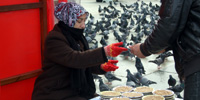
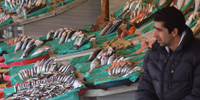
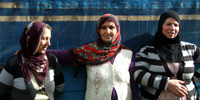
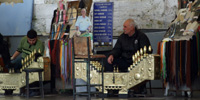
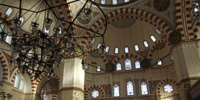
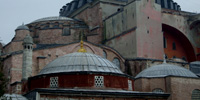
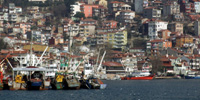
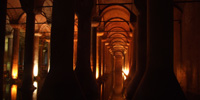
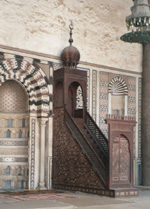
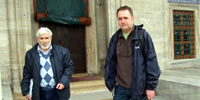
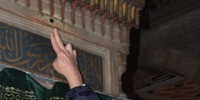
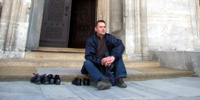
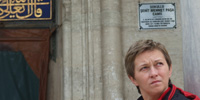
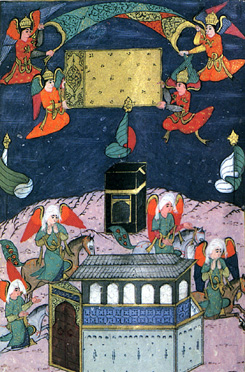
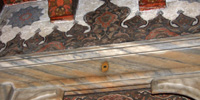
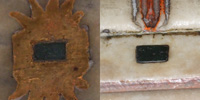
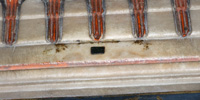
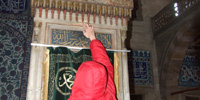
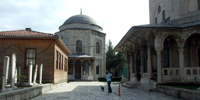
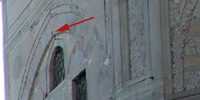
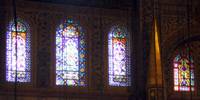
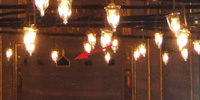
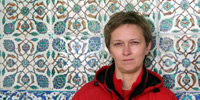
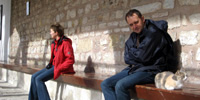
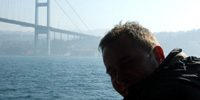
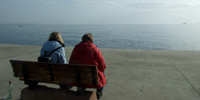
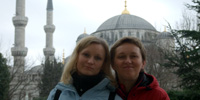
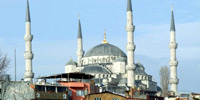
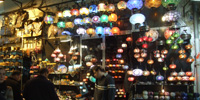
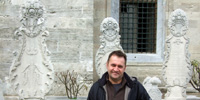
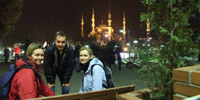
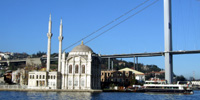
_th.jpg)
